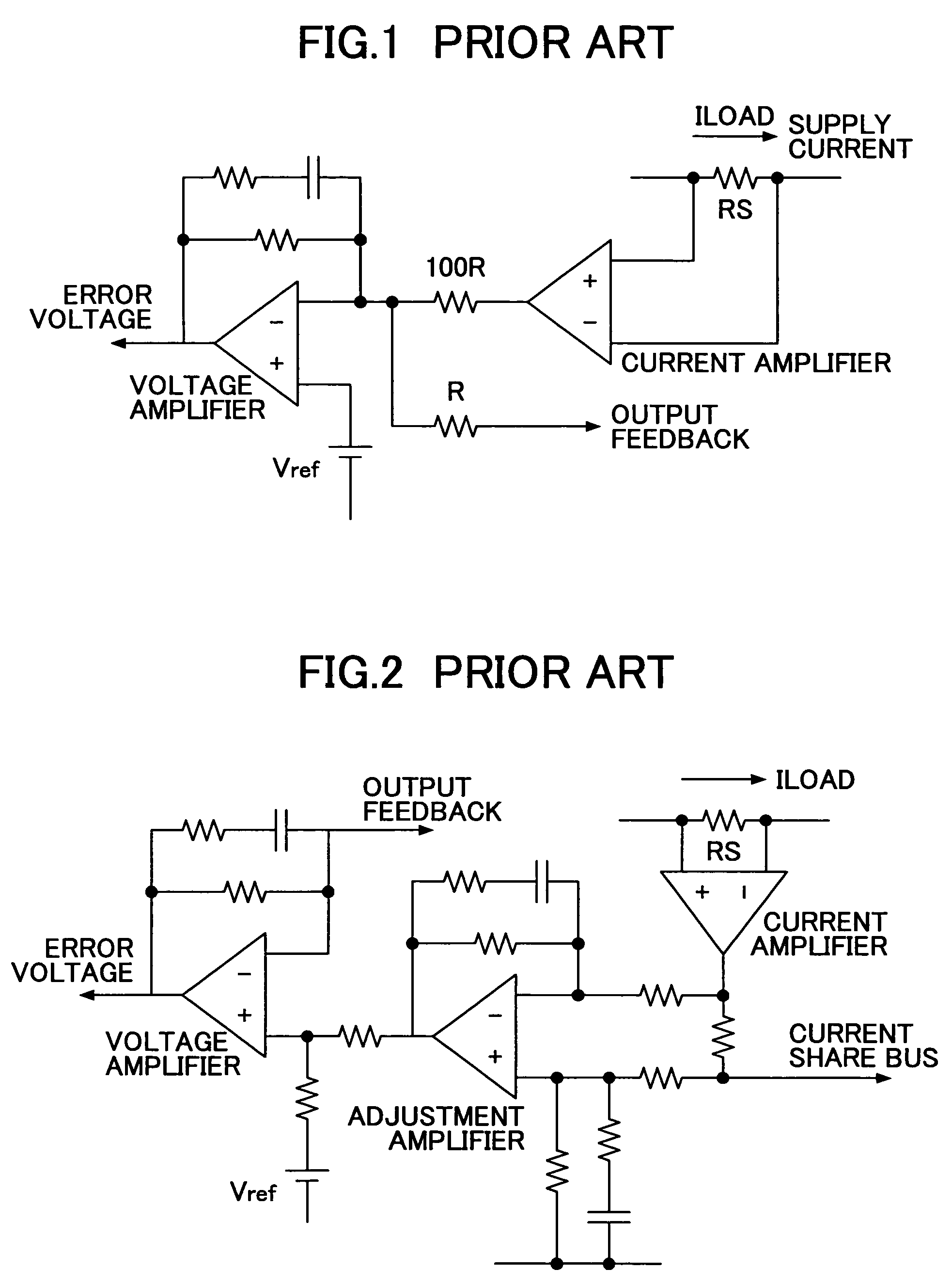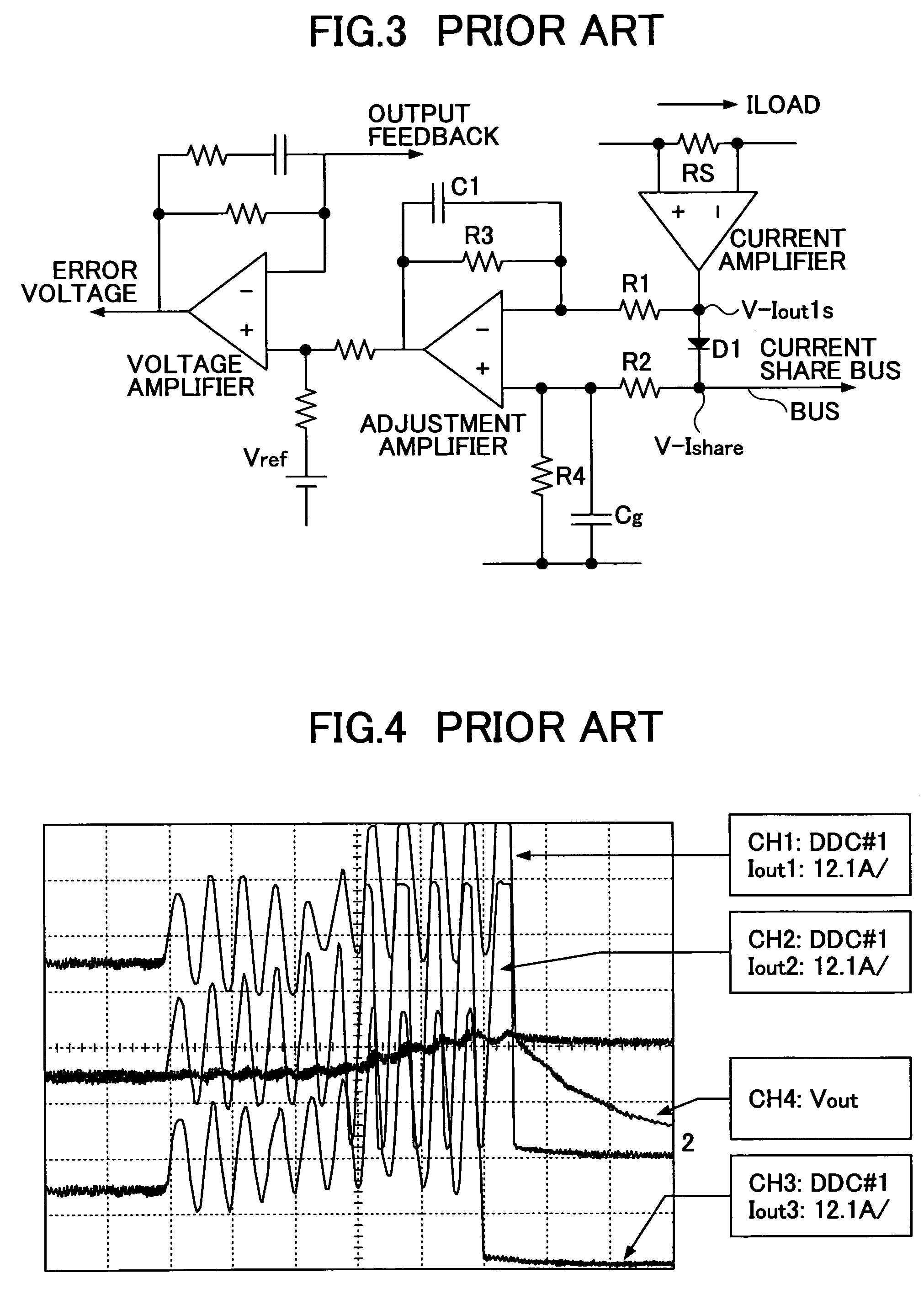Power supply
a power supply and power supply technology, applied in the field of power supplies, can solve problems such as system down, memory operation error, and tendency to increase output voltage, and achieve the effect of preventing the occurrence of voltage increase and preventing abnormal oscillation
- Summary
- Abstract
- Description
- Claims
- Application Information
AI Technical Summary
Benefits of technology
Problems solved by technology
Method used
Image
Examples
Embodiment Construction
[0078]According to an embodiment of the present invention, in a power supply having parallel-connected multiple DDCs, a configuration shown in FIG. 10 is employed where a resistor Rd0 is connected between the current reference signal V-Ishare and the current detection signal V-Iout1s of a current balance circuit 10 of each DDC, and a resistor Rd1 is connected between the current detection signal V-Iout1s and ground (GND).
[0079]As a result, in the DDC, if V-Ishare is higher than an electric potential indicating its own output current (the output potential of a current detection amplifier A2), V-Iout1s increases through the resistor Rd0 in accordance with V-Ishare. As a result, the maximum value of the current detection signal V-Iout1s matches the current reference signal V-Ishare (FIGS. 15A and 15C). Thus, current balance control that follows up a maximum current value is enabled.
[0080]On the other hand, in the case of a conventional circuit configuration, the diode D1 is connected b...
PUM
 Login to View More
Login to View More Abstract
Description
Claims
Application Information
 Login to View More
Login to View More - R&D
- Intellectual Property
- Life Sciences
- Materials
- Tech Scout
- Unparalleled Data Quality
- Higher Quality Content
- 60% Fewer Hallucinations
Browse by: Latest US Patents, China's latest patents, Technical Efficacy Thesaurus, Application Domain, Technology Topic, Popular Technical Reports.
© 2025 PatSnap. All rights reserved.Legal|Privacy policy|Modern Slavery Act Transparency Statement|Sitemap|About US| Contact US: help@patsnap.com



